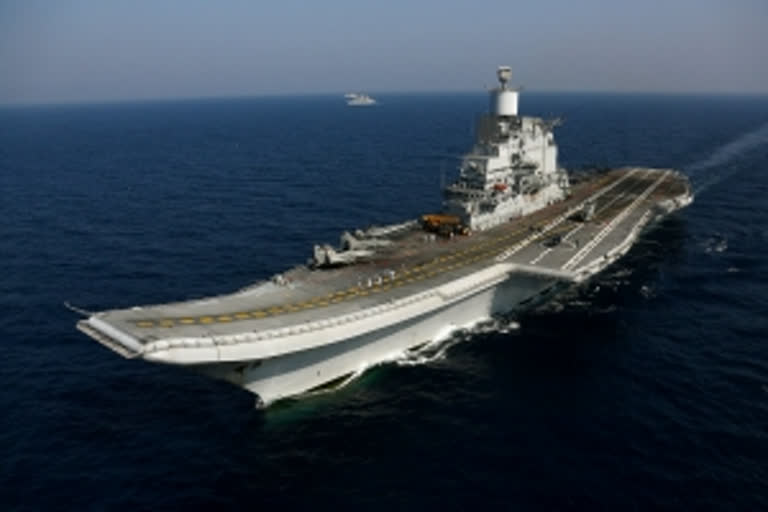New Delhi: With Japan and Australia inking the agreement to join the China-led Regional Comprehensive Economic Partnership (RCEP) agreement in Hanoi on Sunday, the reverberations of the pact may be felt on Tuesday in the high seas southwards of Pakistan.
Because from Tuesday, the real action would have started with the second phase of 'Malabar Exercise' in the northern part of the Arabian Sea, one of the world’s busiest commercial shipping lanes that begin in the oil-rich Gulf.
What makes ‘Malabar 2020’ very important and unlike any of its earlier avatars is because it would have been the first joint and integrated military expression of the informal grouping called ‘Quad’.
Loosely organized on an anti-China mooring, ‘Quad’ was vigorously pushed by outgoing US President Donald Trump who would now be handing over the reins of power to Joe Biden in January 2021.
The first phase of ‘Malabar 2020’ was from November 3-6, 2020, off the Visakhapatnam coast in the Bay of Bengal.
It began on the same day that the US went to elections to choose its next President.
But from November 3 to now, a lot has changed. For one, Trump has lost the battle of the ballot. Two, whether President-elect Joe Biden continues to pursue the ‘Quad’ effort remains to be seen.
There is a lot of speculation as to whether the Biden-regime would be as hawkish on China as President Trump.
Also Read: Phase 2 of naval exercise between India, Australia, Japan and the US to begin from 17 Nov
If so, the primary reason behind the ‘Quad’—to disallow Chinese paramountcy in the Indian Ocean, would be negated.
While President Trump focused on a Quad as the corner-stone of an anti-China policy, a Biden government may change the direction of US foreign policy.
With RCEP, it is for the first time that Japan will be part of a trading bloc with traditional-rival China.
Touted as the world’s largest trading bloc, the RCEP comprises 15 economically powerful nations from the Asia-Pacific region.
India had withdrawn from RCEP talks in November 2019.
RCEP, seen as an effort to progressively lower tariff barriers, includes the fast-growing ten ASEAN members groups, China, Japan, South Korea, Australia and New Zealand.
It will account for 30 per cent of the world’s population and 30 per cent of the global economy.
Hosted by the Indian Navy, Malabar 2020 would have seen the Indian, US, Japanese and Australian navies exercise in coordinated unison.
The first phase (November 3-6) saw the participation of the Indian Navy’s INS Ranvijay (destroyer), INS Shivalik (frigate), INS Sukanya (patrol vessel), INS Shakti (fleet tanker) and submarine INS Sindhuraj, while, USN Ship USS John S McCain (guided-missile destroyer), RAN Ship HMAS Ballarat (long-range frigate) with integral MH-60 helicopter, and JMSDF Ship JS Onami (destroyer) with an integral SH-60 helicopter, were part of the exercise.
The top focus of Malabar’s Phase 2, which begins Tuesday, will be Indian Navy’s Vikramaditya Carrier Battle Group and the US Navy’s Nimitz Carrier Strike Group.
Besides other ships, submarines and aircraft of the participating navies, it would see exercises by MIG 29K fighters, F-18 fighters and E2C Hawkeye.
The Indian contingent will include indigenous destroyers Kolkata and Chennai, stealth frigate Talwar, fleet support ship Deepak and integral helicopters, besides the indigenously built submarine Khanderi and P8I maritime reconnaissance aircraft.
The US contingent will include cruiser Princeton and destroyer Sterett in addition to P8A maritime reconnaissance aircraft. Australia will be represented by its frigate Ballarat besides the participation of some Japanese naval platforms.
Also Read: India not ready for RCEP, lacks micro-level product database to negotiate, says Dr N.R. Bhanumurthy



